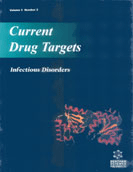Abstract
G protein-coupled receptors (GPCRs) comprise the largest family in the receptorome (the subset of the genome encoding membrane receptors). These signal transducing molecules convey extracellular signals into the cell interior by activating intracellular networks such as heterotrimeric G protein-dependent signaling pathways. They are widely distributed in the nervous system where they mediate a myriad of key processes including cognition, mood, appetite, pain and synaptic transmission. Currently, at least 30% of marketed drugs are GPCR modulators. With global aging, the CNS drug market is set to grow. GPCR ligands for CNS receptors feature prominently in the pipeline of major pharmaceutical companies. Among GPCRs widely investigated as drug targets include the metabotropic glutamate, adenosine and cannabinoid receptors, as evidenced by recently patented ligands for these receptors. Metabotropic glutamate receptors regulate signaling by glutamate, the major excitatory brain neurotransmitter, while adenosine is a ubiquitous neuromodulater mediating diverse physiological effects. Recent patents for ligands of these receptors include mGluR5 antagonists and adenosine A1 receptor agonists. Cannabinoid receptors used to be one of the most important GPCR drug discovery targets for treating obesity and metabolic syndrome, but the unexpected withdrawal of several CB1 antagonists/inverse agonists has prompted alternative approaches. These recent patents are the outcome of the continuing focus of many pharmaceutical companies to identify novel GPCR agonist, antagonist or allosteric modulators useful to treat psychiatric and neurological diseases for which more effective drugs are urgently needed.
Keywords: G protein, receptor, signaling, drug target, drug discovery, ligand, agonist, antagonist, metabotropic glutamate, adenosine, cannabinoid






















